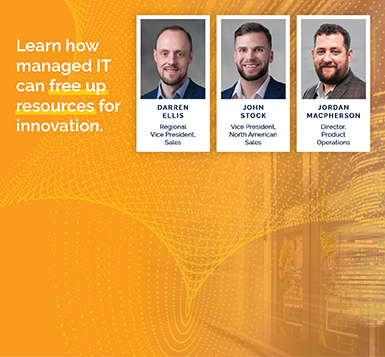4 benefits of remote monitoring solutions
Park Place Hardware Maintenance
IT managers face numerous challenges trying to balance the entire technology configuration to meet end-user needs while minimizing risks. The status of the hardware setup plays a major role in this process, even if more organizations are focusing on applications and services than the underlying infrastructure.
The bring-your-own-device movement and trends in graphical user interface design all point to an overwhelming trend in the technology world – users don’t want to see how something is accomplished, they just want an easy-to-use product. This focus is permeating the enterprise and leaving IT departments to find ways to give end users consumer-like functionality that protects them from dealing with complexity, hardware considerations or other traditional concerns. While this puts the focus on delivering apps and services, doing so effectively depends on being able to manage hardware while maintaining a focus on strategic operations. Remote monitoring systems can help IT teams complete this balancing act, and here are a few ways the technology accomplishes this aim:
1. Alerting IT teams of impending failure
Hardware failure can be problematic regardless of the circumstances, but remote monitoring systems give IT leaders anywhere from a few days to a couple of minutes warning if a system failure is about to take place. This is often enough time to shuffle some virtual machines around and ensure the end-user experience is not altered, in any way, by the system breaking down. Protecting customers, whether they be consumers or business employees, from disruption is extremely important and remote monitoring makes that easier.
2. Developing better partnerships
Not all hardware systems are always managed by IT teams. However, IT is, in the end, responsible for doing everything it can to make sure users get the best experience possible. A remote monitoring system can help partners work with the configuration more effectively and give IT managers the ability to make sure vendors meet service level agreements. For example, some third-party hardware maintenance providers use remote monitoring to identify potential problems at client sites before they happen. Alternately, IT managers can monitor application performance to make sure cloud providers meet SLAs.
3. Less worry
The days of having to walk around the data center floor taking temperature readings and identifying the status of systems are long gone. This tedious, time consuming and risky process – success depended on being in the right place at the right time – is replaced by sensors that work with software to alert IT managers when certain risk conditions are met. The end result is a configuration that is much easier to keep track of, leaving IT teams with less to worry about and more mental energy to put on high-thinking tasks.
4. Stability
In the end, efforts to drive innovation hinge on having a stable environment in the first place. IT managers are continually tasked with driving innovation by focusing on broad overarching application and service strategies that drive business revenue opportunities. Finding success in this area can be incredibly difficult if organizations have not established the operational frameworks necessary to ensure stability within the data center configuration. Remote monitoring solutions provide inherent checks and balances to make sure IT teams are able to clearly understand the status of hardware and make necessary changes as needed to ensure a stable setup.
Effective partnerships can help IT managers to take organizations from the basic benefits of remote monitoring to an IT setup that capitalizes on its full potential. For example, effective hardware maintenance plans help organizations make full use of legacy systems, minimize extended warranty costs and ensure stability without creating fiscal or operational risk.



